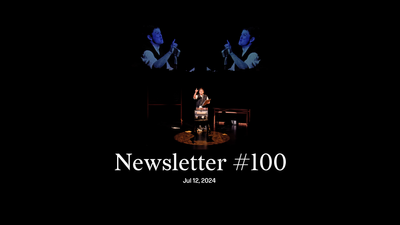Dear reader,
Today, on the eve of Vesak Day, Marissa Lee has published her first piece for Jom, “Days of being mild: A Buddhist journey”. Marissa, raised Catholic, walks us through her discovery of Buddhism and meditation in Singapore, a trip that began during the pandemic.
More Singaporeans (31 percent) profess belief in Buddhism than in any other religion, and over the past decade I’ve had more Buddhist-related conversations with friends here than ever before. They range from the personal and introspective, often involving meditation, to the broad and expansive: for instance “Buddhist” approaches to economic development or human progress, often with nods to environmental sustainability, Bhutan and gross national happiness.
Marissa’s piece should also appeal to all of us who’ve felt dulled by pandemic-era restrictions—that creeping ennui or, as The New York Times famously put it: “Feeling Blah During the Pandemic? It’s Called Languishing”.
“It recently occurred to me—and then only because someone mentioned the word—that I haven’t been bored in a long time,” writes Marissa. “I’ve stopped using Netflix or YouTube as opiates, and I don’t need alcohol to help me scatter my aversion towards this hot, dense city.”
Marissa was an SPH scholar and worked as a business/financial correspondent for The Straits Times for six years. Before Jom started, when I was on the lookout for contributors, two financial whizzes recommended her to me. We met for a kopi in Simpang Bedok about a year ago. I wanted her to work on a business investigative piece. But she mostly wanted to talk about Buddhism, which was lovely. Marissa wrote to Jom a few weeks ago saying she was ready to publish, and that she didn’t want any contributor fees, but wanted this piece to sit outside the paywall, so that anybody could read it. Consider the essay a little gift from Marissa to Singapore. (We’re still going to pay her lah.)
In Singapore This Week we have two separate blurbs on RidoutGate; Khir Johari’s latest publishing award (should we now call him Singapore’s greatest author?); JoTeo the poet; Halimah Yacob’s decision not to stand for re-election; and much more. Check it out.
Finally, more good news to share. Nine months after we launched, Jom now has over 1,000 paid subscribers. When we began this start-up journey, one of the Substack newsletters I subscribed to as part of my own biz education is called “First 1000”. It’s a thing in the start-up world, it’s an important milestone.
Thank you all for your support! We are now a third of the way to financial sustainability. In our recent reader survey, one person asked how we could possibly break even with 3,000 subscribers.
Well, given the current split in membership tiers (83% “Members” and 17% “Supporters” and “Patrons”), we’ll hit S$35,000 in “monthly recurring revenues (MRR)” once we cross some point over 3,000 subscribers.
So, 3,000 subscribers is a bit of shorthand for our magic number, S$35K in MRR. That amount is enough to cover our costs. Where does that money go? We run a tight ship on fairly low salaries. Most of our costs are on wages—four full-timers and several part-timers—and contributor fees. No rental, few overheads.
S$35K per month (or S$420K per year) will ensure Jom’s survival. To put things in perspective, Ng Yat Chung, SPH’s former CEO (who ran the firm into the ground), earned S$1.79m a year. One SPH executive’s salary is enough to cover four entire Joms. Those, dear reader, are the gross inequities in a system where a one-party-dominated government subsidies media outfits run by friendly editors.
Your tax dollars, of course, help fund SPH (now SPH Media Trust), though I know there’s little you can do about that. By contrast, when it comes to subscribing to Jom, and supporting independent media in Singapore generally, I know you have a lot more agency.
Once again, thank you.
Jom berjaya
Sudhir Vadaketh
Editor-in-chief, Jom
If you've enjoyed our newsletters, please scroll to the bottom of this page to sign up to receive them direct in your inbox.






